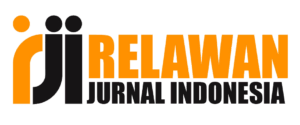Monitoring Konsumsi Listrik Rumah Tangga Berbasis Internet of Things Terintegrasi dengan Virtual Private Server
Household Electricity Consumption Monitoring Based Internet of Things Integration with Virtual Private Server
DOI:
https://doi.org/10.30812/bite.v3i1.1326Keywords:
Power monitoring, Electricity consumption, Internet of Things, Virtual Private ServerAbstract
Most household appliances use electricity as their energy. The need for electricity from year to year is getting bigger. Measurement of electrical power usage is usually done using simple measuring instruments and recording is still manual so that the data obtained cannot be done all the time and the results take too long to obtain. The appropriate technology for this problem is the Internet of Things (IoT) based electrical power monitoring system technology. capable of providing accurate and real-time results. The methods carried out are arranged in several stages, starting from data collection, design, configuration, implementation. The tools used in this research will use NodeMCU as the microcontroller, ACS712 current sensor as the electric current sensor, Virtual Private Server (VPS) as the web server. The results of this study are an electrical power monitoring system that makes it easier to monitor electrical power at home. The accuracy of power measurement by the system is 92.87%. Based on the error value, the electricity consumption monitoring system is good enough to be implemented at home.
Downloads
References
[2] D. Handarly and J. Lianda, “Sistem Monitoring Daya Listrik Berbasis IoT (Internet of Thing),†JEECAE (Journal of Electrical, Electronics, Control, and Automotive Engineering), vol. 3, no. 2, pp. 205–208, 2018, doi: 10.32486/jeecae.v3i2.241.
[3] P. A. Wulandari, P. Rahima, and S. Hadi, “Rancang Bangun Sistem Penyiraman Otomatis Berbasis Internet of Things Pada Tanaman Hias Sirih Gading,†Jurnal Bumigora Information Technology (BITe), vol. 2, no. 2, pp. 77–85, 2020, doi: 10.30812/bite.v2i2.886.
[4] U. Ulumuddin, M. Sudrajat, T. D. Rachmildha, N. Ismail, and E. A. Z. Hamidi, “Prototipe Sistem Monitoring Air Pada Tangki Berbasis Internet of Things Menggunakan Nodemcu Esp8266 Sensor dan Ultrasonik,†Seminar Nasional Teknik Elektro 2017, no. 2016, pp. 100–105, 2017, doi: 978-602-512-810-3.
[5] E. S. I. Team, “ESP8266EX Datasheet,†2015. [Online]. Available: https://www.adafruit.com/images/product-files/2471/0A-ESP8266__Datasheet__EN_v4.3.pdf.
[6] A. MicroSystems, “Datasheet ACS712,†2006. [Online]. Available: https://www.alldatasheet.com/datasheet-pdf/pdf/174116/ALLEGRO/ACS712.html.
[7] A. Almurayh, “Virtual Private Server,†Spring, p. 28, 2010.
[8] H. B. Santoso, S. Prajogo, and S. P. Mursid, “Pengembangan Sistem Pemantauan Konsumsi Energi Rumah Tangga Berbasis Internet of Things (IoT),†ELKOMIKA: Jurnal Teknik Energi Elektrik, Teknik Telekomunikasi, & Teknik Elektronika, vol. 6, no. 3, p. 357, 2018, doi: 10.26760/elkomika.v6i3.357.
[9] Tukadi, W. Widodo, M. Ruswiensari, and A. Qomar, “Monitoring Pemakaian Daya Listrik Secara Realtime Berbasis Internet of Things,†Seminar Nasional Sains dan Teknologi Terapan VII 2019, pp. 581–586, 2018.
[10] A. Heryanto, J. Budiarto, and S. Hadi, “Sistem Nutrisi Tanaman Hidroponik Berbasis Internet Of Things Menggunakan NodeMCU ESP8266,†Jurnal Bumigora Information Technology (BITe), vol. 2, no. 1, pp. 31–39, 2020, doi: 10.30812/bite.v2i1.805.














